You'll get the best results from solar cooking between 11 AM and 3 PM when UV rays peak, with clear skies providing at least 30-45 minutes of direct sunlight per hour. Position your cooker facing south, especially in winter, and use black cooking vessels to maximize heat absorption. While cold weather won't stop your solar oven from reaching 250-400°F, you'll need to adjust for seasonal changes and protect against wind. Keep alternative methods ready for overcast days, like electric skillets or slow cookers. Monitor weather forecasts and maintain backup plans for storms. The right preparation strategies will transform you into a confident solar chef in any season.
Best Weather For Solar Cooking
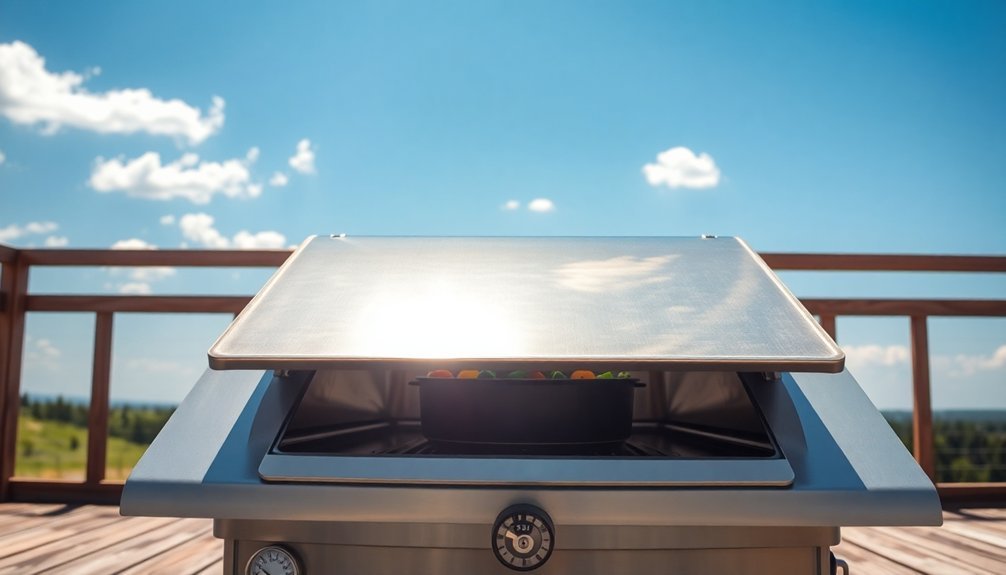
When it comes to solar cooking, clear and sunny skies are your best friend.
You'll need at least 30-45 minutes of good sunlight each hour to maintain effective cooking temperatures. The prime time for solar cooking is between 11:00 am and 3:00 pm when UV rays are strongest.
Don't let cold weather discourage you – a well-insulated solar oven can reach temperatures between 250° and 400° even on frigid days.
In fact, cold, dry air can sometimes improve solar irradiation, making winter cooking possible. Just make sure you're cooking in direct sunlight with minimal shadows. Finding a sheltered cooking spot can help prevent wind from disrupting your solar oven's performance.
You'll want to avoid early morning or late afternoon cooking sessions when the sun's rays are too weak to generate sufficient heat.
Seasonal Solar Cooking Tips
Your solar cooking approach needs to shift with the seasons, as winter's lower sun angle and shorter days require strategic adjustments to your cooking routine.
You'll want to position your solar oven facing south and start cooking earlier in the day during winter months, while taking advantage of snow's reflective properties to boost cooking efficiency. Getting started requires pre-heating for 15-20 minutes to ensure optimal cooking temperatures before adding your food.
During summer, you can maximize the longer daylight hours by cooking multiple dishes throughout the day and utilizing the intense overhead sun between 11:00 am and 3:00 pm.
Winter Solar Cooking Strategies
Despite winter's shorter days and lower sun angles, successful solar cooking remains achievable with the right strategies and equipment adjustments.
You'll need to position your cooker carefully by extending the inclining leg fully and stabilizing it with bricks or blocks to prevent wind disturbance.
For ideal results, choose equipment suited for winter conditions. Panel-style cookers like the Copenhagen Lite and SunFlair work well with lower sun angles, while parabolic cookers offer rapid cooking similar to stovetop heat. Quality solar box cookers outperform other styles during cold weather.
You'll want to adjust parabolic cookers more frequently as the sun moves across the horizon.
Make the most of limited sunlight by starting early and cooking in stages when necessary. Use oven roasting bags to retain heat, and opt for enameled metal or cast iron pans that warm quickly and maintain temperature.
Remember to use less water in recipes to enhance efficiency.
Adapting Summer Heat Patterns
Summer's intense sunlight and longer days create ideal conditions for solar cooking, making it the perfect season to maximize your outdoor meal preparation.
You'll achieve the best results during the summer solstice when the sun's proximity is most favorable.
Position your cooker to align with the sun's midday position and adjust it throughout the day to follow the sun's path. Consider using cookers with telescoping arms for precise angle adjustments as the sun moves. You can expect peak temperatures by mid-afternoon, but you'll need to plan accordingly for morning or late afternoon cooking.
To boost efficiency, cut ingredients into smaller pieces and keep liquids tightly sealed to prevent condensation on the glass.
Overcast Day Cooking Methods
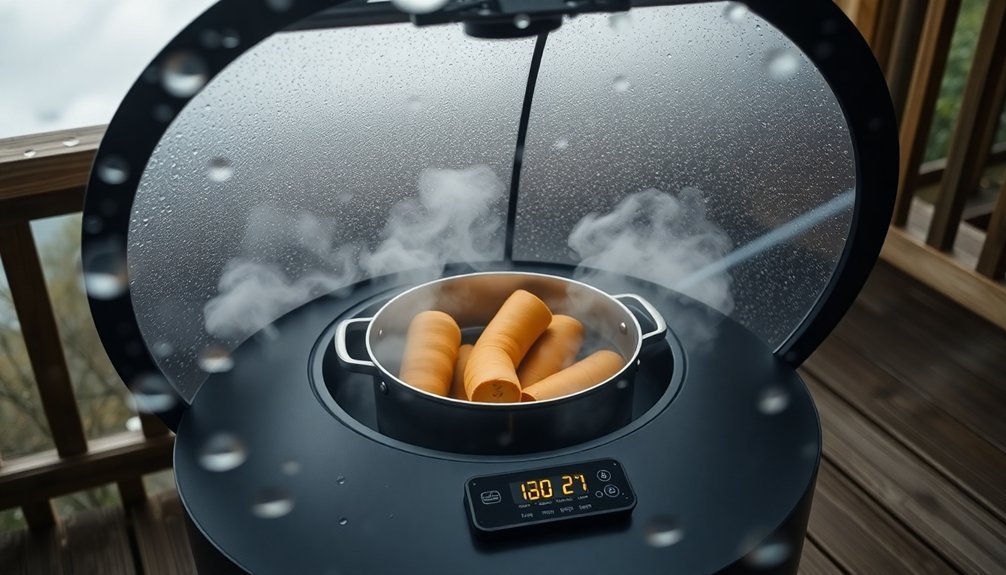
When overcast skies block the sun's rays, three reliable cooking methods can keep your kitchen cool and meals on schedule.
You'll want to shift to electric skillets and rice cookers, which you can set up outdoors near an electrical outlet. These versatile appliances excel at cooking everything from vegetables to garbanzo beans.
For indoor cooking, maximize your stovetop's efficiency by using flat-bottomed pots that match your burner size. Keep lids on to trap heat and reduce humidity. If you're using a gas stove, turn off pilot lights to minimize excess warmth.
On particularly dreary days, embrace comfort food cooking with quick-prep dishes like skillet eggs or slow cooker meals. You can whip up satisfying options like chicken potpie or vegetable chowder while staying cozy indoors.
Wind Protection Strategies
Strong winds can quickly turn your outdoor cooking plans upside down, but proper preparation makes all the difference.
Start by choosing a strategic location for your setup, positioning it near a wall or installing temporary windscreens. You'll want to place your grill perpendicular to prevailing winds on a flat, stable surface.
Select a grill that's built to handle challenging conditions. Look for models with heavy bases, high sides, and sturdy stainless steel construction.
Don't forget to anchor your grill securely and keep it away from flammable materials. When cooking, minimize lid openings and trim excess fat from food to prevent flare-ups.
If you're dealing with persistent winds, consider using wind-resistant recipes that require lower temperatures. Remember to adjust cooking times, as wind can greatly cool your grill's temperature.
Temperature Control During Storms
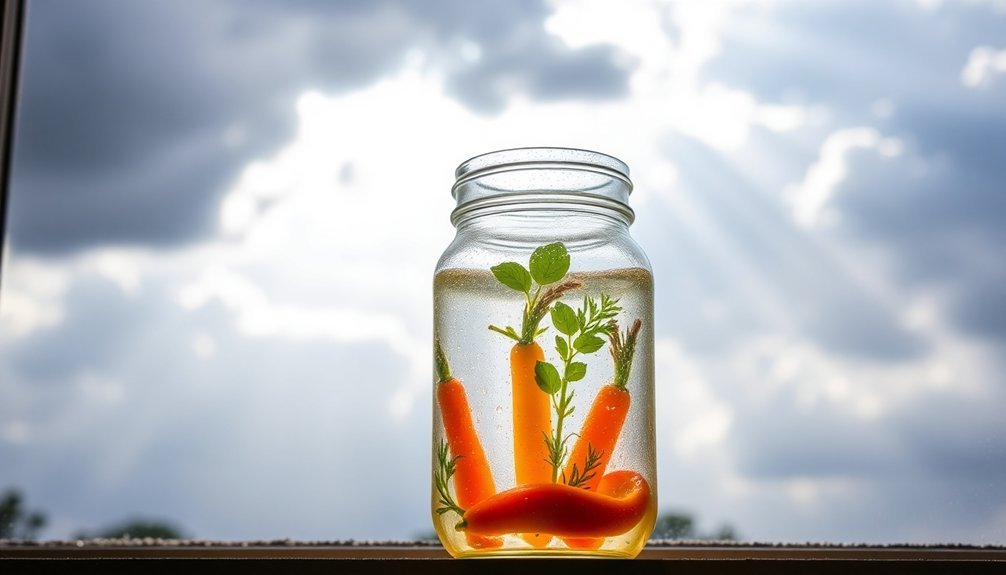
You'll want to stay ahead of stormy weather by monitoring local weather alerts and preparing backup food storage options before conditions worsen.
When storms approach, protect your temperature-sensitive foods by transferring them to insulated coolers and using pre-frozen ice packs to maintain safe temperatures.
Your emergency plan should include methods for retaining heat in cooking vessels, such as using thermal blankets or insulated containers, to continue food preparation even during power outages.
Stormy Sky Backup Plans
Staying prepared for stormy weather requires a solid plan to maintain safe food temperatures during potential power outages. You'll need to take action before, during, and after storms to protect your food supply.
| Time Period | Critical Actions |
|---|---|
| Pre-Storm | Freeze water/ice packs and monitor temperatures with thermometers |
| During Storm | Keep doors closed; refrigerator lasts 4 hours, full freezer 48 hours |
| Post-Storm | Check temperatures; discard food above 40°F in fridge or 0°F in freezer |
| Backup Options | Use coolers with ice packs or clean snow for temporary storage |
Don't rely on taste to determine food safety. Instead, use thermometers to monitor temperatures and keep dry ice on hand for extended outages. When power returns, check each package for ice crystals if you haven't used a thermometer.
Emergency Heat Retention Methods
When storms threaten to disrupt power and heating systems, effective heat retention methods become essential for maintaining safe temperatures.
You'll want to designate one room as your warm space, sealing off windows and vents with blankets to maximize insulation. Layer your clothing, using natural down materials when possible, and don't forget warm hats and gloves to prevent body heat loss.
For additional warmth during extended outages, consider these safe heating alternatives:
- Position ventless kerosene heaters near partially open windows for proper ventilation
- Use chemical hand warmers strategically in pockets and near core body areas
- Set up soapstone heaters, which can radiate warmth for several hours after heating
Remember to focus your heating efforts in your designated warm room, where you can gather everyone together and benefit from shared body heat.
Monitor Weather Alert Systems
Proper temperature monitoring becomes critical during severe weather events, especially when power outages threaten food safety.
You'll need to equip your refrigerator and freezer with thermometers before the storm hits, ensuring temperatures stay below 41°F for safe food storage.
Keep track of how long your power's been out, as your refrigerator can maintain safe temperatures for up to 4 hours, while a full freezer lasts up to 48 hours.
If you're expecting extended outages, stock up on coolers, ice packs, and dry ice. Don't open fridge or freezer doors unnecessarily to preserve cold air.
Once power returns, check internal temperatures immediately.
Discard any perishables that have been at or above 40°F for 2 hours or more.
Alternative Heating Solutions
During challenging weather conditions, you'll want reliable alternatives to traditional cooking methods. Solar cookers can effectively prepare meals between 10 a.m. and 4 p.m. using black cooking vessels to enhance heat absorption.
When sunlight isn't ideal, chemical-based heating systems like flameless ration heaters can warm your food quickly, raising temperatures by 100°F in just 10 minutes.
For power outages or indoor cooking, you've got several practical options:
- Microwave cooking preserves nutritional value and heats food uniformly when electricity is available.
- Propane heaters offer up to 99% efficiency for indoor heating without requiring electricity.
- Catalytic heaters provide safe indoor heating using natural gas or propane without emitting harmful gases.
Frequently Asked Questions
Can Solar Cookers Sterilize Medical Equipment and Purify Water Effectively?
Yes, you'll find solar cookers can effectively sterilize medical equipment at 128°C and purify water at 83.5°C. They'll work even in cloudy conditions, thanks to thermal insulation, meeting CDC sterilization standards.
How Do Different Colored Cooking Pots Affect Solar Cooking Efficiency?
You'll get the best results using dark-colored pots as they absorb more sunlight and heat. Light-colored pots reflect solar energy away, making your cooking less efficient and slower in a solar cooker.
Will Food Taste Different When Cooked in a Solar Cooker?
You'll notice food tastes better with solar cooking since it preserves natural flavors and nutrients through gentle, slow cooking. You won't get any burnt taste, and ingredients' true flavors shine through more distinctly.
Are There Specific Materials That Should Never Be Used in Solar Cookers?
You'll want to avoid untreated cardboard, regular plastic, non-tempered glass, and untreated fabrics. Don't use materials that can melt, off-gas, or absorb moisture, as they're unsafe and reduce cooking efficiency.
Can Solar Cookers Be Used at High Altitudes or Extreme Temperatures?
Yes, you can use solar cookers at high altitudes and extreme temperatures. They'll work effectively as long as there's sufficient sunlight, with performance depending more on sun exposure than ambient temperature or altitude.
In Summary
You've now got all the tools needed to cook with solar power in various weather conditions. Don't let cloudy skies or wind discourage you – just adapt your methods. Remember to monitor the temperature closely during storms and always have backup heating options ready. Whether it's summer or winter, you'll find solar cooking can work year-round with the right preparation and weather awareness.

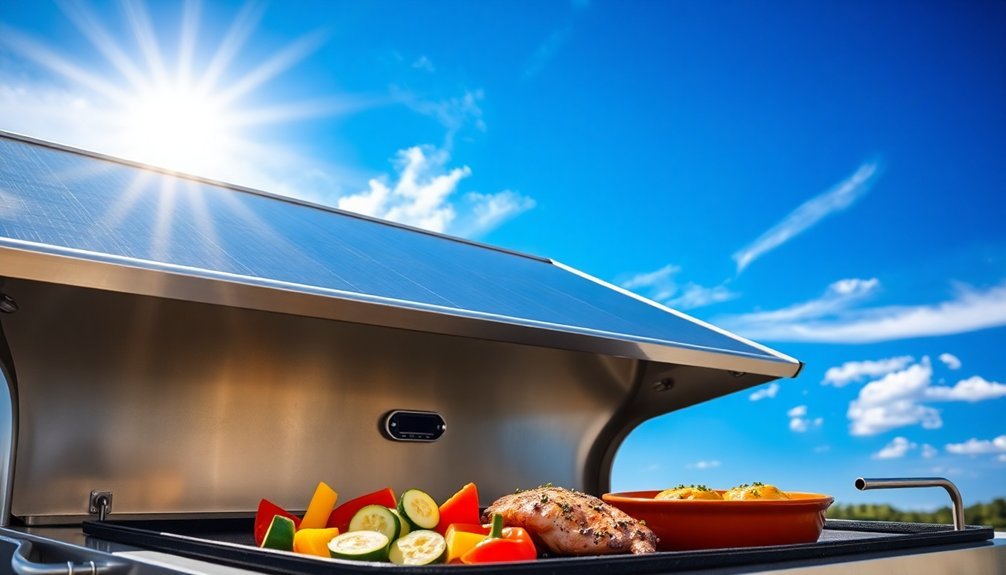
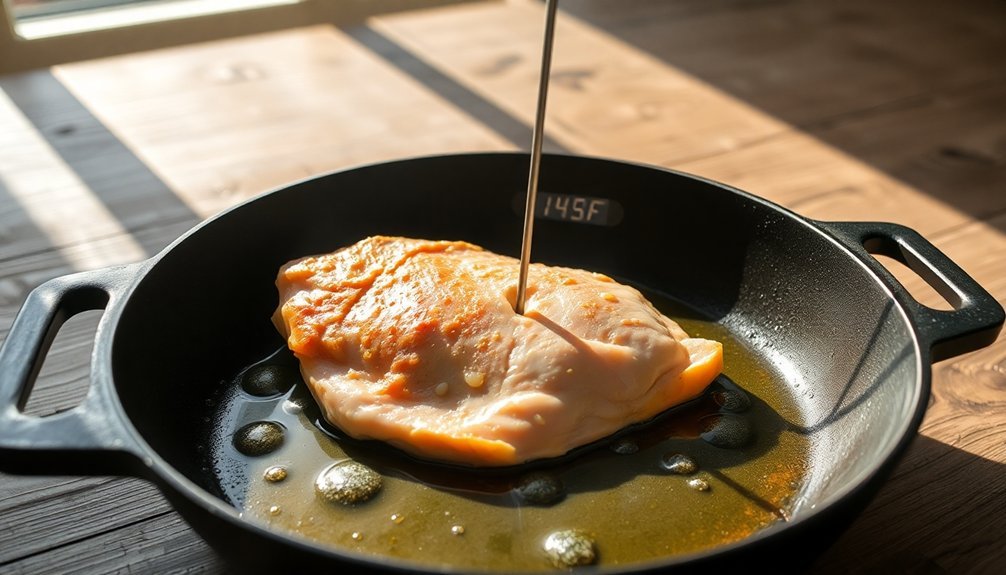
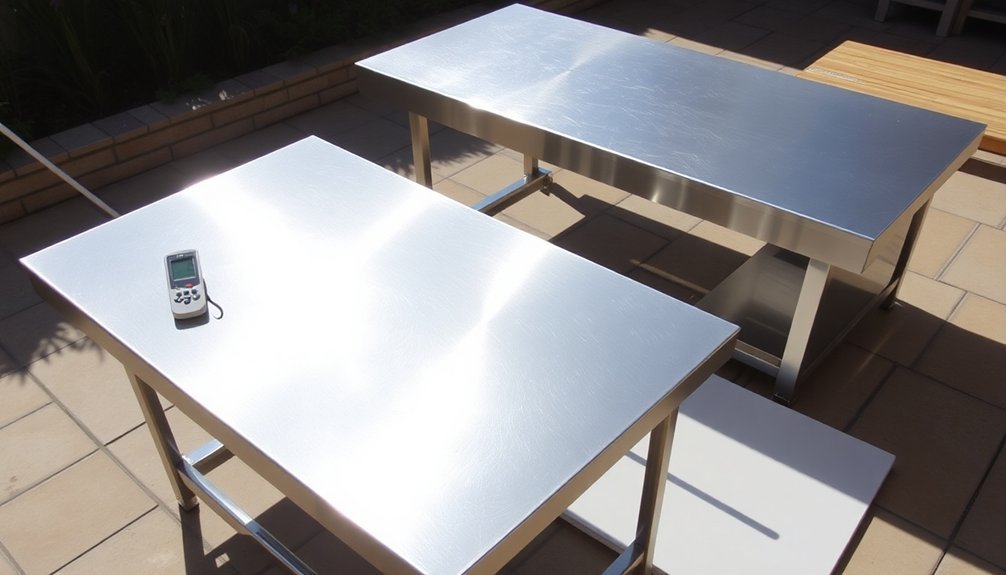
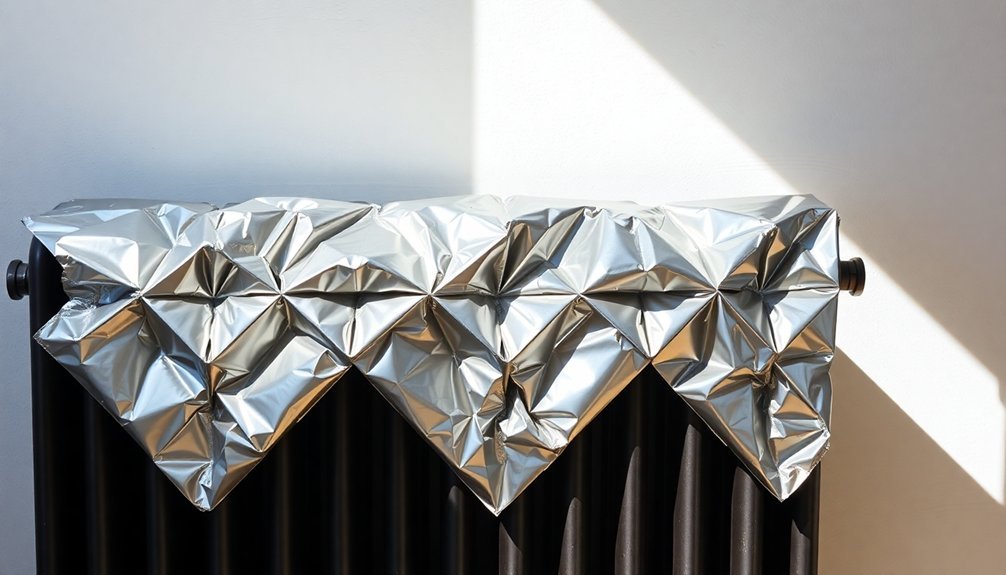
Leave a Reply